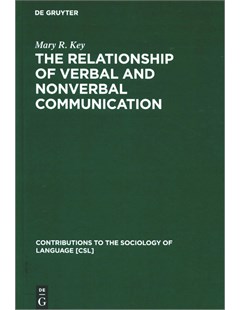The Relationship of Verbal and Nonverbal Communication
Communication is the act of interacting and exchanging ideas with other people. There are two primary forms of communication: verbal and nonverbal. With verbal communication, people express their thoughts, ideas, and feelings through spoken or written language. Nonverbal communication uses other methods, such as body language including facial expressions, gestures, and more. We are going to discuss both of these forms of communication to help you understand them better.
2011
Communication is the act of interacting and exchanging ideas with other people. There are two primary forms of communication: verbal and nonverbal. With verbal communication, people express their thoughts, ideas, and feelings through spoken or written language. Nonverbal communication uses other methods, such as body language including facial expressions, gestures, and more. We are going to discuss both of these forms of communication to help you understand them better.
People use verbal communication to express themselves in many ways during discussions, speeches, and everyday conversations. Just how effective this style of communication is can vary. It will depend on a number of verbal communication skills, such as the volume of your voice, the tone you use, the clarity of your speech, and the caliber of the words you use. You’ll probably get some idea of how effective your communication is through the feedback you receive.
You can help improve the effectiveness of your communication by considering your target audience and how you can adjust your message so they will pay attention to you and understand you. With verbal communication, you have a lot of control over adapting your message if you feel it is not effective.
In order to do this, you should first ensure that you have expressed your intended message. It’s possible for the people to whom you are trying to communicate to misunderstand your words or the intention behind those words.
Whether or not your communication is effective depends on the listener as well as yourself, and you can’t control the listener—but you can try to make your message as clear as possible. To do this, you also need to consider nonverbal communication.
Nonverbal communication involves communicating without using words. Although nonverbal communication can emphasize spoken words, it can also contradict them.
The three main aspects of nonverbal communication are tone of voice, body language, and eye contact, each of which has an impact on how people receive your message.
Do these verbal and nonverbal communication examples make sense to you?
Nonverbal communication skills are a crucial part of articulating your message. People often rely primarily on nonverbal cues to derive the meaning of the message. This makes it vital that you work on improving your nonverbal communication skills.
Communication skills are critical in all aspects of life, whether verbal, nonverbal, or written communication. Improving your communication skills requires understanding the differences between verbal and nonverbal communication. Simply understanding communication cues, such as maintaining eye contact and using body language that shows you are interested in what the speaker has to say, can go a long way toward achieving effective communication.
Key, Mary R. The Relationship of Verbal and Nonverbal Communication. De Guyter, 2011
 |  |  |
| The Relationship of Verbal and Nonverbal Communication | Tomato TOEIC Listening | BIG STEP TOEIC 1 |
Thứ Năm, 14:49 16/02/2023
Copyright © 2018 Hanoi University of Industry.